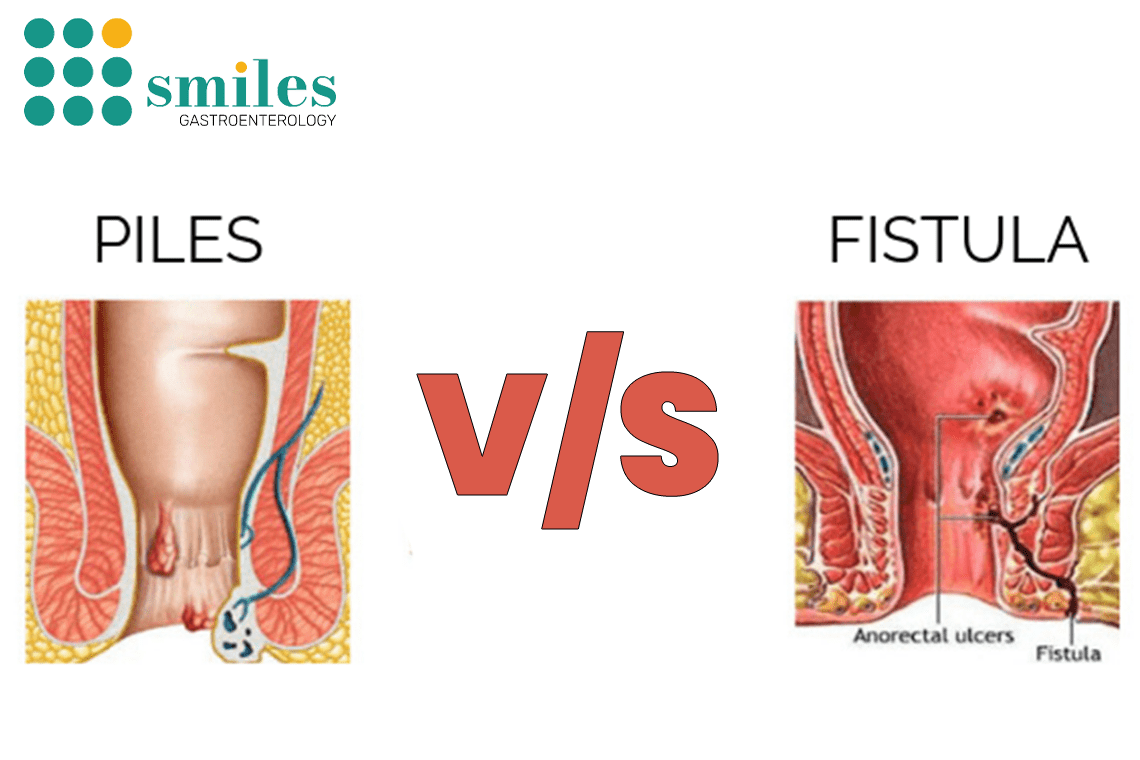The anal orifice is located at the end of the rectum. The anus, the passageway through which feces depart the body, can be impacted by several disorders. The two most prevalent disorders are piles and fistula. They are frequently mistaken for one another.
This article discusses the differences between two conditions that affect the anus, piles and fistula.
Piles
Piles or hemorrhoids are enlarged veins. They can be of three forms: external, internal, and thrombosed. Piles can develop due to extreme effort when passing feces, obesity, and protracted toilet use.
Internal hemorrhoids are found inside the anus, as the name implies. They are therefore difficult to see. These hemorrhoids have the potential to bleed from the anus. On the other hand, external hemorrhoids are those that develop on the anus’s exterior. These are visible to the naked eye.
Hemorrhoids that have become thrombosed are those in which an exterior hemorrhage has developed a blood clot.
Fistula
A tunnel from an abscess inside the anus to a section of the skin that has developed around the anus is known as an anal fistula. An abscess forms when anal glands get obstructed. It may enlarge and turn into a fistula if left untreated.
Piles vs. Fistula: Understanding the fundamental distinctions
To better comprehend how fistula and piles differ from one another, let’s examine some elements of these two medical conditions:
Type of the condition
The blood vessels swell up in piles, whereas a fistula is characterized by the growth of a tunnel from the anus to the surrounding epidermis.
Reasons for the condition
Lack of water intake, pregnancy, obesity, eating a diet low in fiber, straining when passing feces, and spending a lot of time on the toilet seat are a few of the main reasons for piles. Additionally, it can occur when lifting big objects. Age raises the likelihood of the condition. Pile development is also more likely in expectant mothers.
Rectal cancer, urinary tract infections, sexually transmitted illnesses, and Crohn’s disease are a few of the significant causes of fistula. Patients who already have HIV (human immunodeficiency virus), diabetes, anal trauma, Crohn’s disease, or TB are at an increased risk of getting a fistula.
Signs of the condition
Soreness around the anus, pain during excretion, feeling constipated, bleeding from the anus (often without any pain), and mucous discharge are the primary signs of piles.
The primary symptoms of fistula include skin rashes in the affected areas, pus or blood discharge close to the anus, pain while urinating, and anal swelling. A fever may develop as well.
Identification of the condition
The doctor will often perform a physical examination to look for any atypical growths in the anus to identify piles. They could additionally employ equipment like a proctoscope. If cancer or other digestive health issues are suspected, they may recommend a colonoscopy.
Doctors typically combine physical examinations with imaging testing to detect fistulas. After examining the anus, the doctor might recommend an X-ray or a colonoscopy for the patient.
Treatment strategies
Piles can be treated by medication or surgery. Creams applied to the affected areas may help some people. Additionally, they could take oral painkillers that their doctor has recommended.
Hemorrhoids can occasionally require treatments such as rubber band ligation and infrared or laser coagulation to remove the hemorrhoids. For severe piles, a hemorrhoidectomy can be performed. Depending on the circumstance, a hemorrhoidectomy may be carried out under local or total anesthesia.
Increased consumption of fiber-rich foods is advised for patients who have experienced hemorrhoids. Additionally, they must drink at least eight glasses of water daily.
Fistula cannot be cured with medication. The only course of action available to the patient is surgery. Fistulotomy is the name of this procedure. For the fistula tunnel to heal, the surgeon merely opens the surrounding muscles and skin. A seton that aids in draining the fistula before the surgery may be needed for more complex fistulas.
Conclusion
Hemorrhoids and fistulas are very different from one another. One’s quality of life can be significantly enhanced by knowing about each disease and how to prevent it. It is crucial to recognize one’s risk factors for disease and take action to lessen their influence. Exercise and eating a nutritious diet can both significantly enhance general well-being.
At the Smiles Hospitals in Mathikere, a team of colorectal specialists is available to help you get a diagnosis and a treatment plan. One of the top colorectal surgeons at Smiles Hospitals in Mathikere, Dr. Parameshwar CM, has successfully treated several patients with piles and fistula. Get an appointment with us to receive the best treatment.

